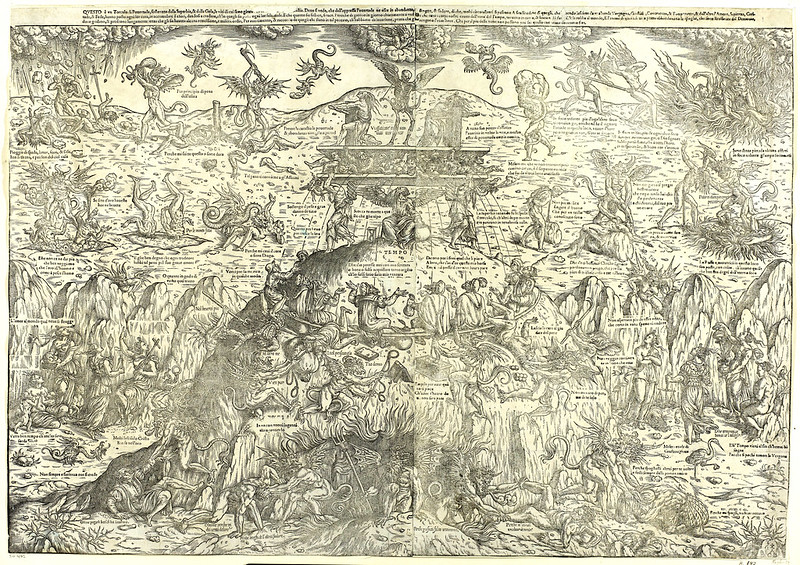
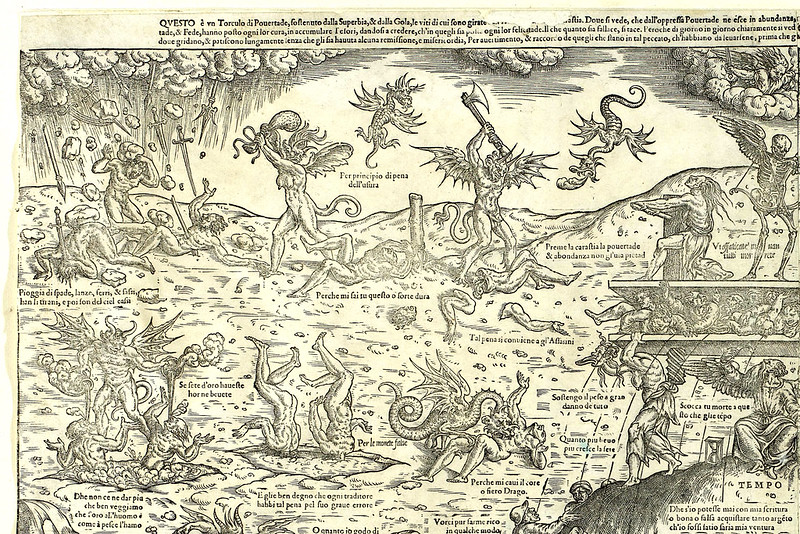
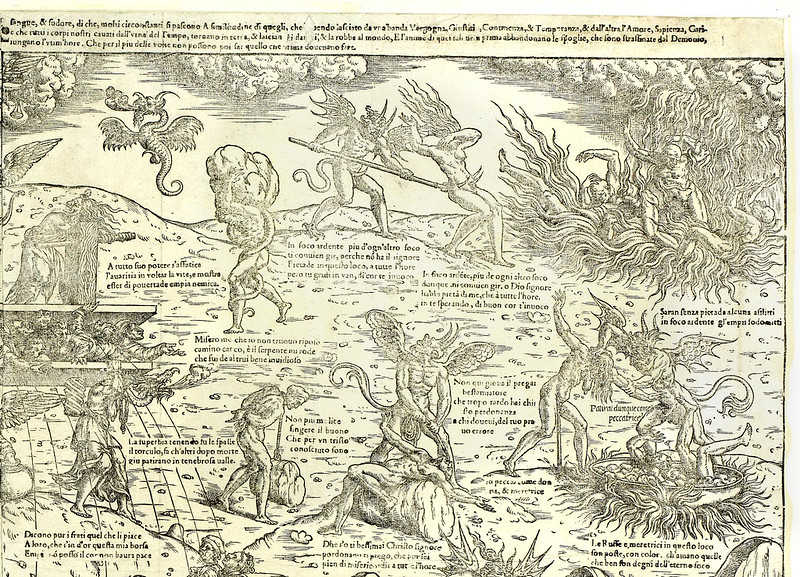
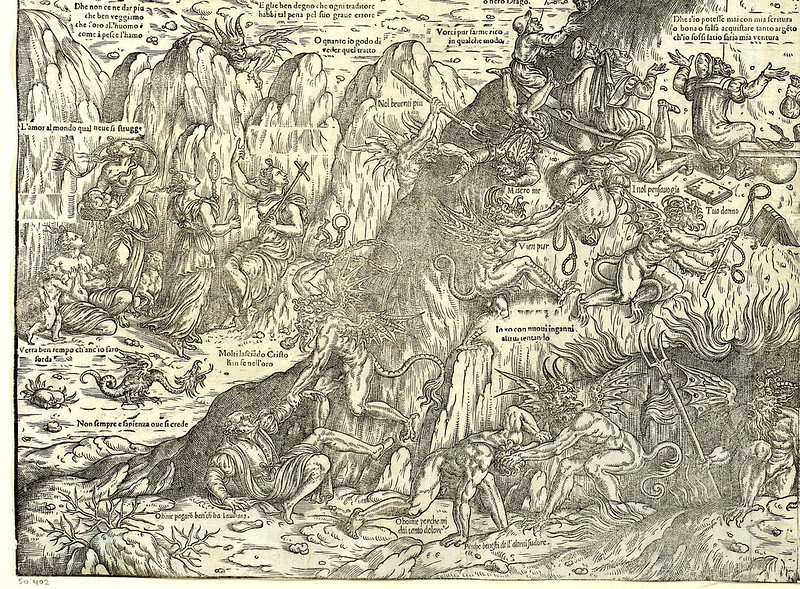
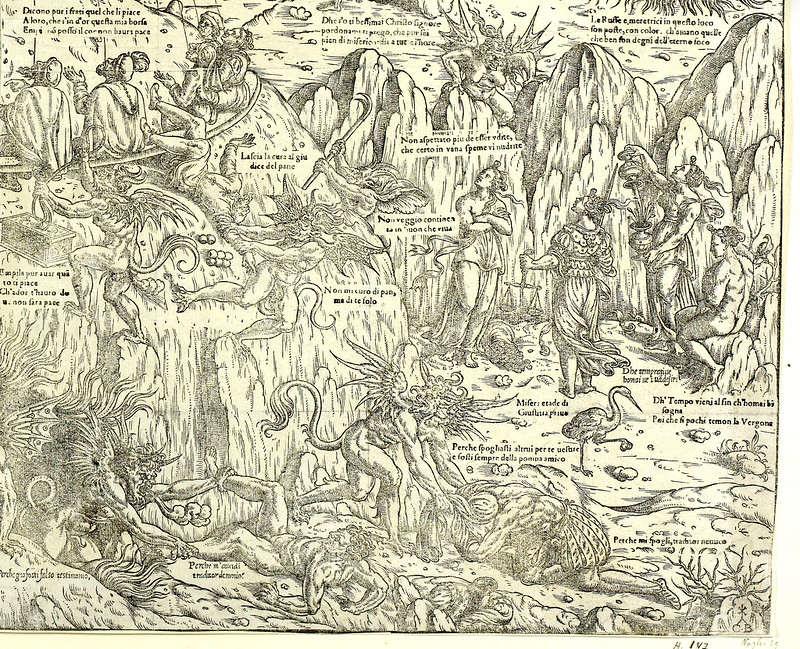
"Cornelis [Willem] Bos (c. 1506/10 — before 7 May 1555) was a Flemish engraver, printseller and book publisher, through whose images after paintings and reproducing ancient Roman sculptures, like the Laocoön, classic works were put in the visual repertory of Northern European artists. His work is often signed with the monogram C-B.
Cornelis was born at 's Hertogenbosch, whence his surname Bos is derived, but on 1 April 1541 he was enregistered as a citizen of Antwerp, where he was therefore already established as a member of the imagemakers' Guild of Saint Luke. His earliest identified engravings (1537) reproduce Maarten van Heemskerck's Prudence and Justice (1537). and a work by Agostino Veneziano. His re-engraving of work by Marcantonio Raimondi does not necessarily indicate that he ever made a trip to Rome. Until 1544 Bos worked in Antwerp as an engraver, commissioned by publishers in the city's extensive book trade for illustrations in books. His engravings, copied from the published engravings in Italian editions, served as illustrations for a brief summary in Dutch of the treaty on architecture by Vitruvius and for a Dutch translation of Book IV of Sebastiano Serlio's architectural treatise, both published by Pieter Coecke van Aelst. Bos' engravings illustrate a text on anatomy that he produced in 1542 by the printer and publisher Antoine de Goys.
In the summer of 1544 Bos was forced to flee Antwerp for his participation in an antisacerdotalist free-thinking spiritualist sect and was declared exiled by the Council of Brabant in his absence. It appears that he went to Paris, where an anatomical work published by Jérôme de Gourmont in 1545 repeats text used by Cornelis Bos and even makes use of the woodblocks formerly in his possession. A decorative patternbook also published by Jérôme de Gourmont, Livre de moresques was a pirated edition of a work published in Antwerp by Bos, c published at Paris, 1546; it served designers of mannerist scrollwork (bandelwerk) in the Low Countries. Between 1546 and 1548, from his secure refuge in Nuremberg, Cornelis Bos would publish more than a hundred engraved designs of strapwork and grotesques. Bos also produced popular engravings of religious and allegorical subjects, often dependent for their composition upon the Kleinmeister of Nuremberg, with many parallels in the output of Virgil Solis." - quote source

No comments:
Post a Comment